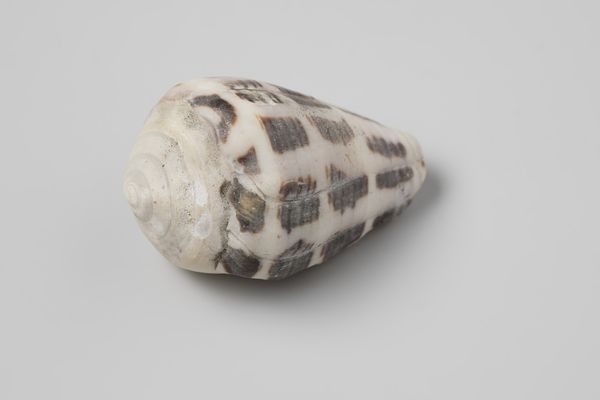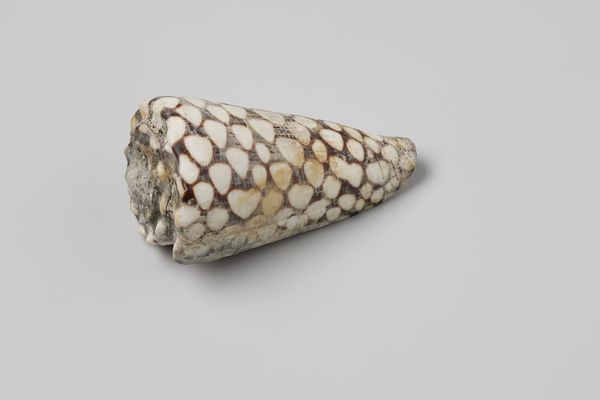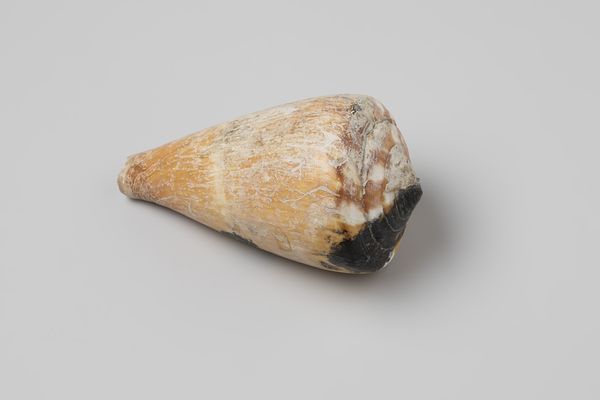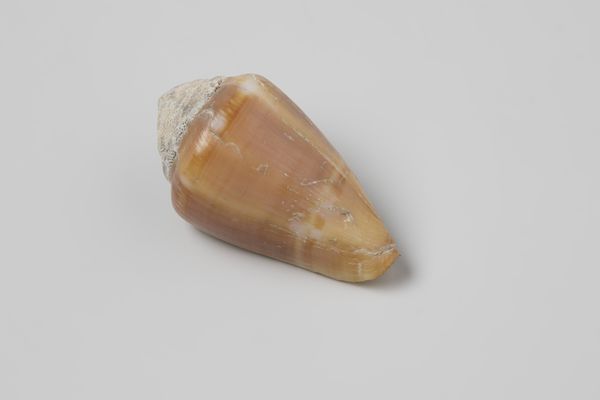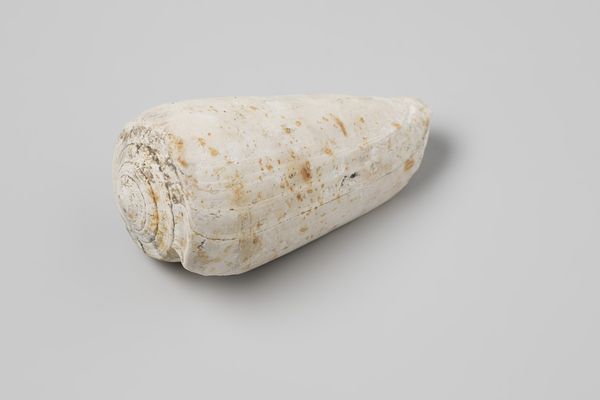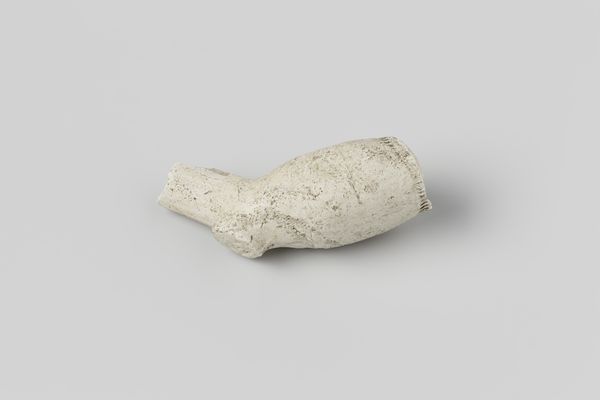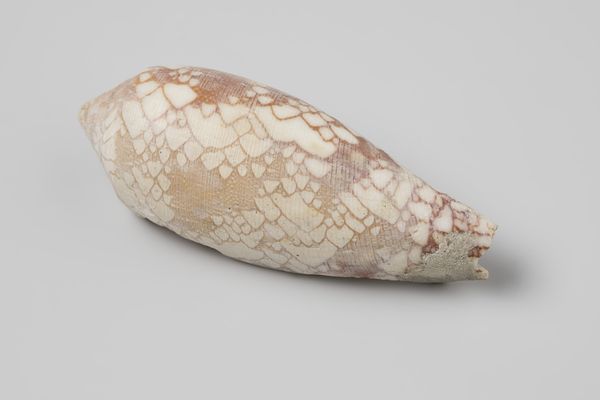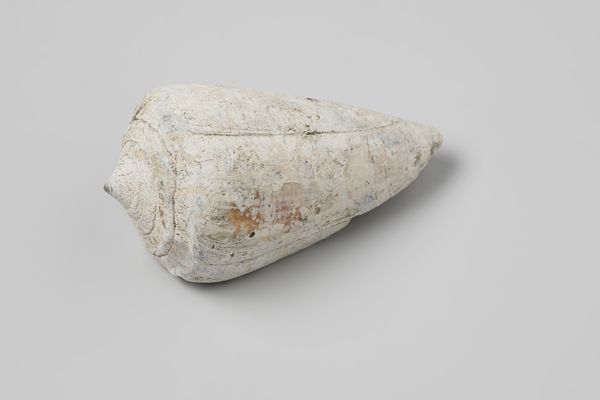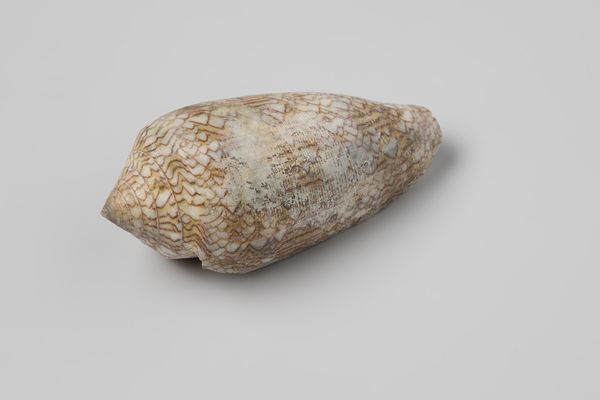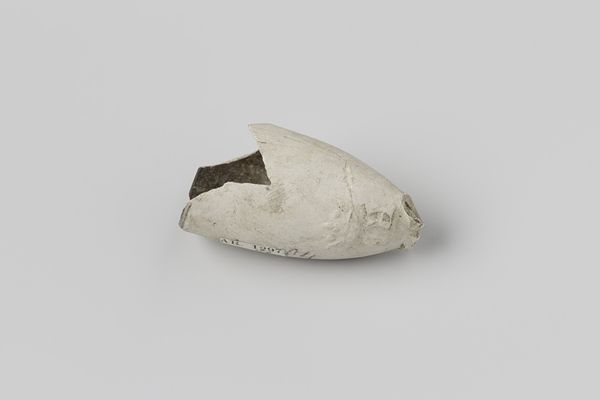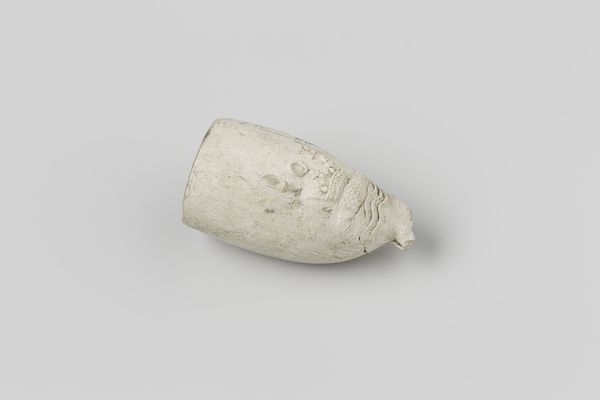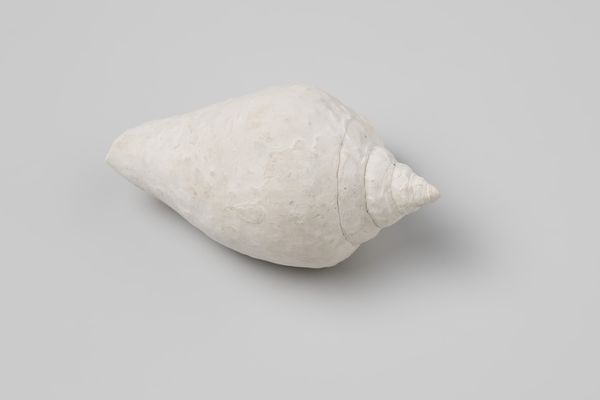
Conus generalis shell from the wreck of the Dutch East India ship Witte Leeuw before 1613
0:00
0:00
found-object
#
found-object
Dimensions: length 4.8 cm, width 2.0
Copyright: Rijks Museum: Open Domain
This Conus generalis shell from the wreck of the Dutch East India ship Witte Leeuw is a compelling object. Its form—a tapered cone—immediately draws the eye, while the muted palette of creams, browns, and subtle grays offers a complex visual texture. The shell's surface is marked with a delicate pattern of horizontal lines and mosaic-like shapes. This design is not merely decorative; it signifies growth, evolution, and the relentless processes of nature. The spiral form, fundamental to the shell's structure, echoes patterns found throughout the natural world, reminding us of underlying structures. The fact that this shell comes from a shipwreck adds another layer of meaning. It speaks of trade, exploration, and the unpredictable forces of history. As an object of natural beauty recovered from a site of maritime disaster, the Conus generalis shell becomes a symbol of survival, adaptation, and the enduring interplay between nature and human endeavor. Its form and origin invite ongoing interpretation and reflection.
Comments
No comments
Be the first to comment and join the conversation on the ultimate creative platform.
